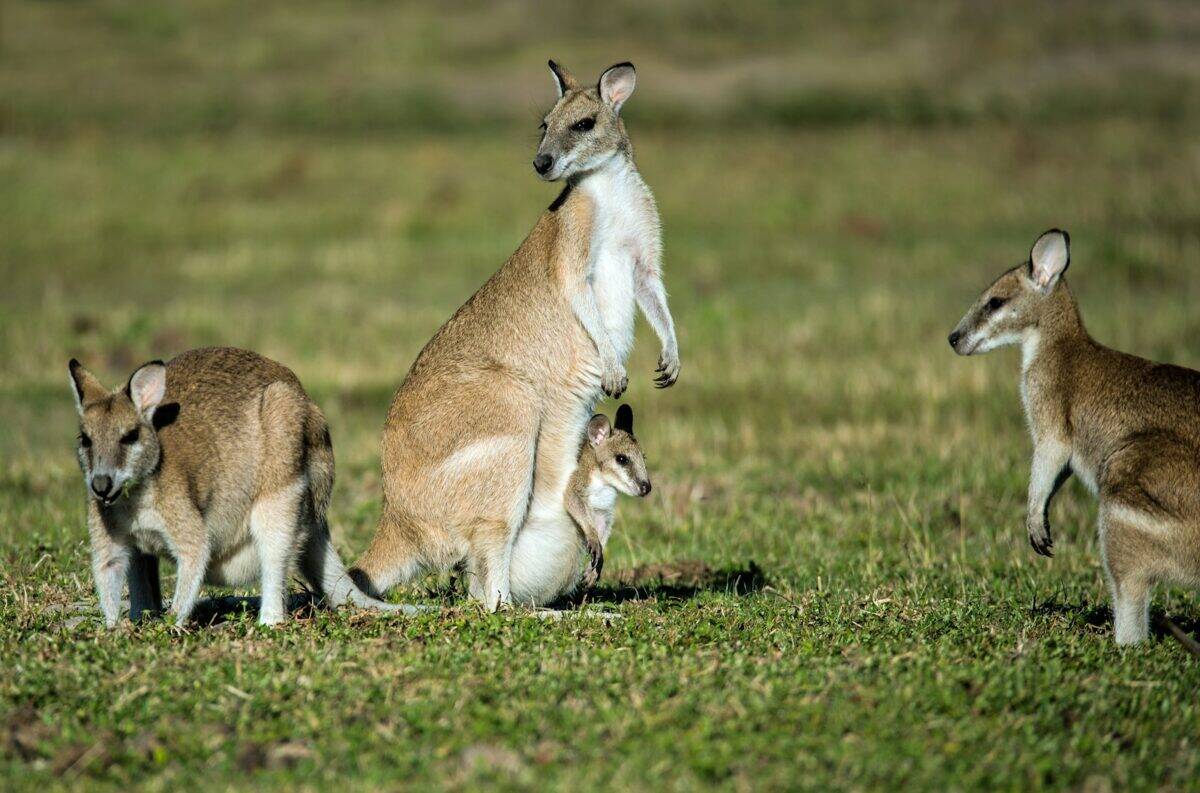In the face of devastating wildfires that increasingly threaten ecosystems worldwide, certain remarkable animals have evolved astonishing adaptations that allow them to survive where others perish. From insects with fire-resistant exoskeletons to mammals with behavioral strategies for escaping flames, these creatures showcase nature’s incredible resilience. This article explores 13 extraordinary animals that have developed various mechanisms to endure, escape, or even benefit from fire. Their stories not only highlight evolutionary marvels but also provide insights into how life persists in the most challenging circumstances. As climate change intensifies wildfire frequency and severity, understanding these adaptations becomes increasingly relevant for conservation efforts and ecological management.
13. Australian Frillneck Lizard

The Australian Frillneck Lizard (Chlamydosaurus kingii) has evolved remarkable fire survival strategies in its native fire-prone habitats across northern Australia. These distinctive reptiles, known for their impressive neck frills, don’t resist fire directly but employ sophisticated escape tactics. When wildfires approach, frillneck lizards retreat to underground burrows, rock crevices, or climb high into trees above the flames. Their ability to detect smoke and heat from considerable distances gives them crucial early warning. Additionally, these lizards have been observed returning to recently burned areas almost immediately after fires pass, taking advantage of exposed prey like insects fleeing the aftermath. This opportunistic behavior allows them to capitalize on resources when competition is reduced. Their behavioral adaptations, rather than physiological fire resistance, exemplify how native Australian fauna has evolved alongside the continent’s fire ecology.
12. Fire Beetles
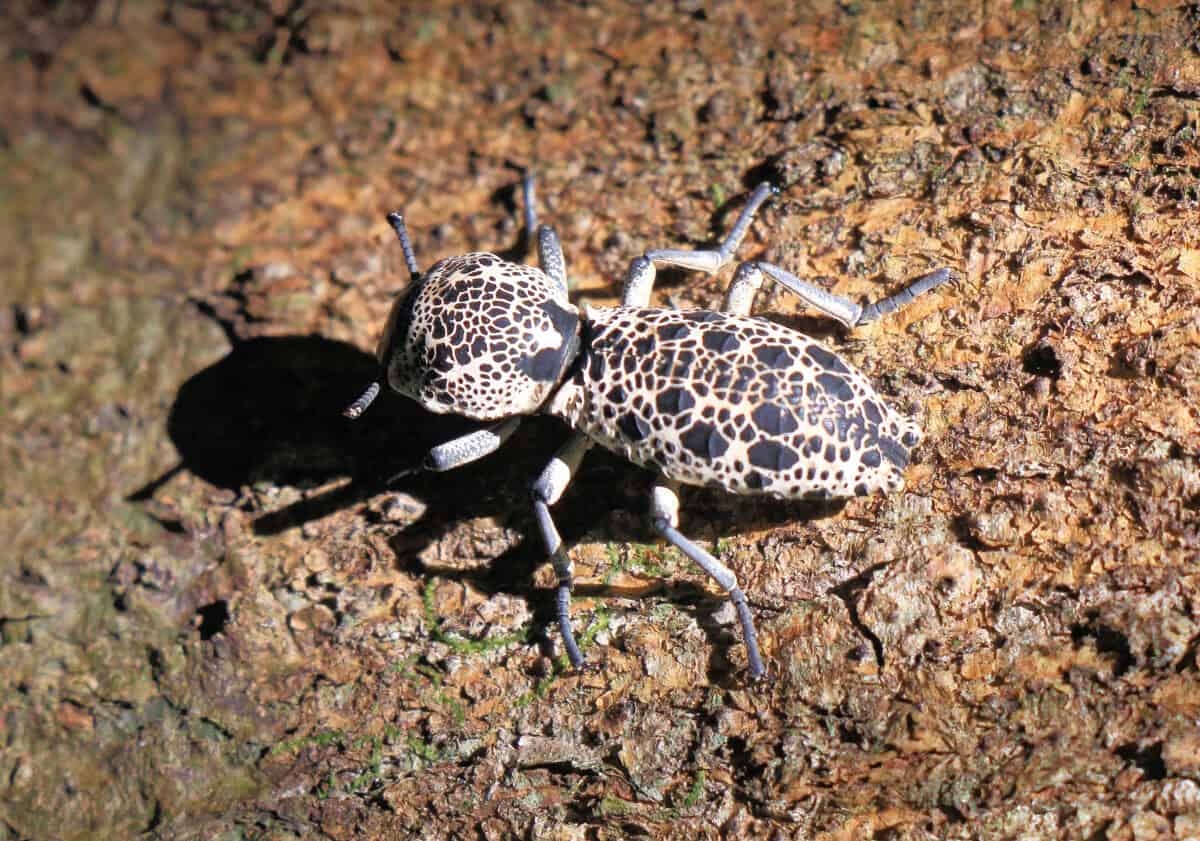
Fire beetles (Melanophila genus) have developed one of the most extraordinary relationships with fire in the animal kingdom. These remarkable insects possess specialized infrared-detecting organs called sensilla, which can detect infrared radiation from fires up to 80 miles away. This incredible adaptation serves a critical reproductive purpose: fire beetles lay their eggs in freshly burned trees where their larvae can develop without competition from other wood-boring insects. The adult beetles have heat-resistant exoskeletons that allow them to land on smoldering wood that would kill other insects. Researchers have discovered that these beetles can detect temperature changes as small as 0.5°C from considerable distances, making them among the most sensitive infrared detectors in nature. Some species have even evolved to rely so completely on post-fire environments that they cannot reproduce without fire-damaged trees, demonstrating an evolutionary relationship with fire that spans millions of years.
11. Fire Ants
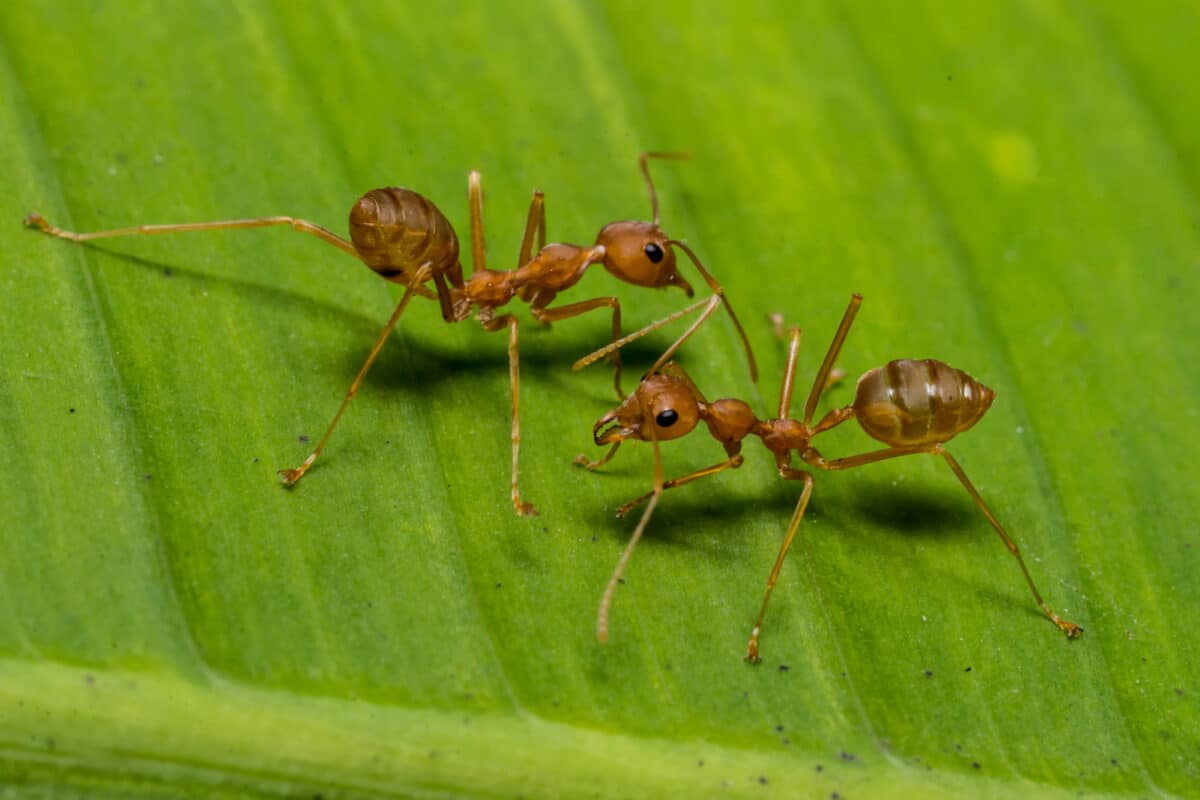
Fire ants, particularly the red imported fire ant (Solenopsis invicta), demonstrate remarkable resilience against fire through collective survival strategies. When facing floodwaters or fires, these ants form living rafts or balls by interlocking their bodies, creating structures that can float for weeks or provide insulation against heat. During wildfires, colonies rapidly mobilize, with worker ants carrying larvae and eggs to safety while others form protective formations. Their exoskeletons contain chitin, which provides some natural heat resistance. Additionally, fire ants typically construct deep, multi-chambered underground nests that can extend several feet below the surface, offering protection from surface fires. The temperature at these depths remains relatively stable even as flames pass overhead. This combination of behavioral adaptations and nest architecture explains why fire ant populations often recover quickly after wildfires, sometimes even expanding their territory as competing species are eliminated.
10. Kangaroos
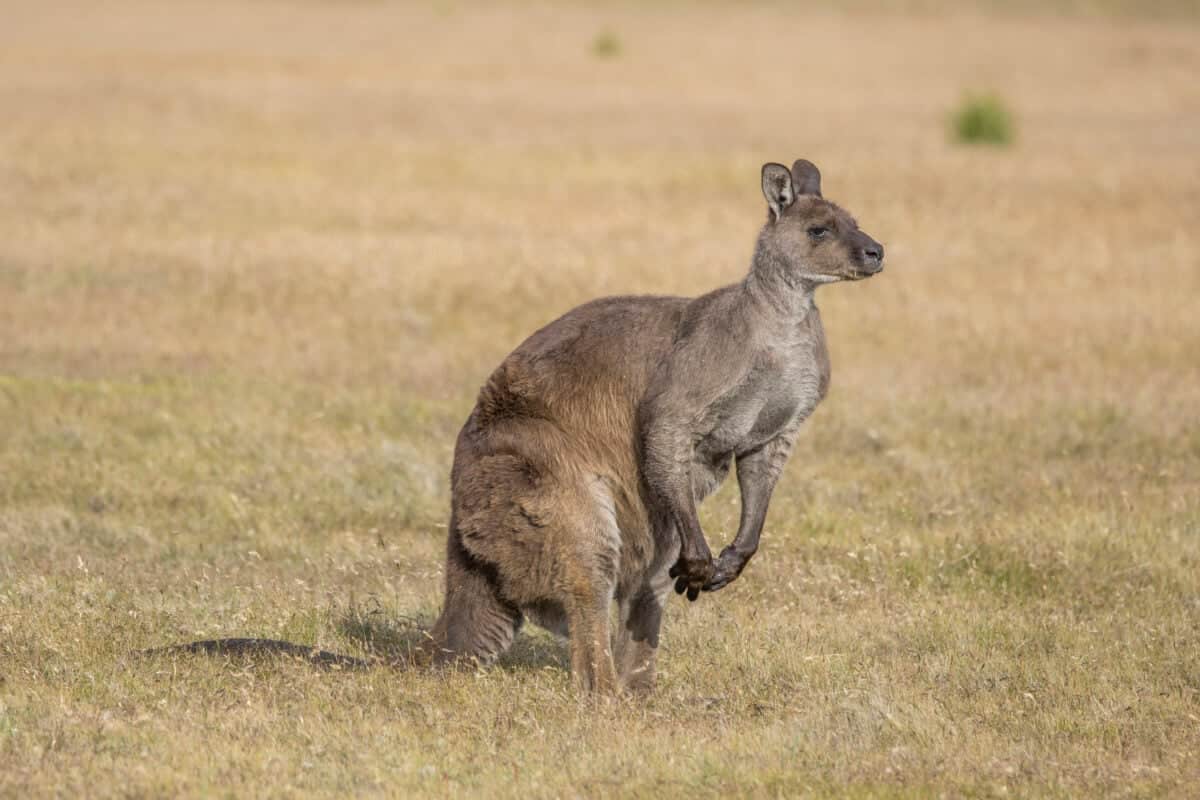
Kangaroos have developed sophisticated behavioral adaptations to survive Australia’s frequent bushfires rather than physiological fire resistance. These marsupials rely primarily on their exceptional mobility—capable of hopping at speeds up to 40 mph (64 km/h)—to escape advancing flames. Research has documented kangaroos’ remarkable ability to navigate through partially burned landscapes, identifying and following fire breaks to safety. Unlike smaller mammals that might burrow, kangaroos actively relocate to already-burned areas where fuel has been consumed, reducing their risk of entrapment. Their acute senses detect smoke and approaching fires from considerable distances, providing critical early warning. Studies following major bushfires have shown that kangaroo populations often recover more quickly than other mammal species, partly because they can rapidly return to burned areas once the immediate danger passes. Their grazing behavior on fresh regrowth also positions them as important ecological contributors to post-fire recovery in Australian ecosystems.
9. Black Fire Beetles
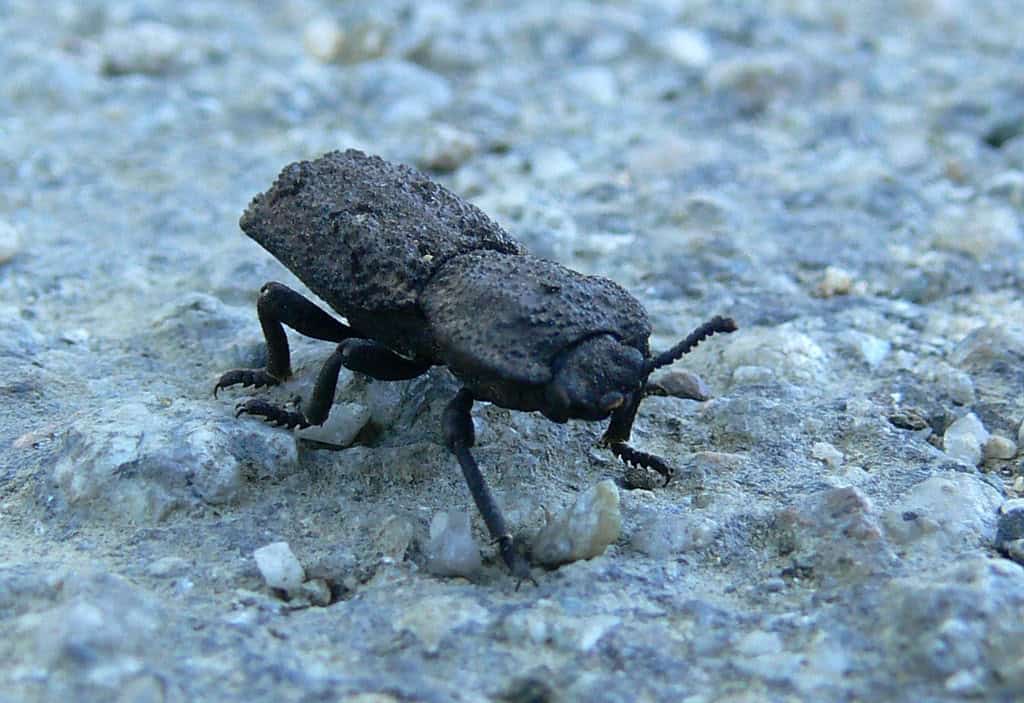
The black fire beetle (Melanophila acuminata) has evolved one of the most specialized relationships with fire in the insect world. Unlike most creatures that flee from flames, these beetles actively seek out forest fires, traveling from distances up to 50 miles away. Their extraordinary sensitivity to fire stems from specialized pit organs located on their thorax that can detect infrared radiation with remarkable precision—capable of sensing temperature changes as small as 0.25°C. This adaptation allows them to locate fires with pinpoint accuracy. Upon reaching recently burned areas, female beetles lay their eggs beneath the bark of fire-damaged trees where their larvae will face minimal competition from other wood-boring insects and benefit from reduced tree defenses. The adult beetles possess heat-resistant cuticles that enable them to walk on still-smoldering surfaces reaching temperatures of 150°F (65°C). This dependence on fire is so complete that some Melanophila species cannot successfully reproduce without access to freshly burned wood, making them true pyrophilic (fire-loving) specialists in forest ecosystems.
8. Goannas
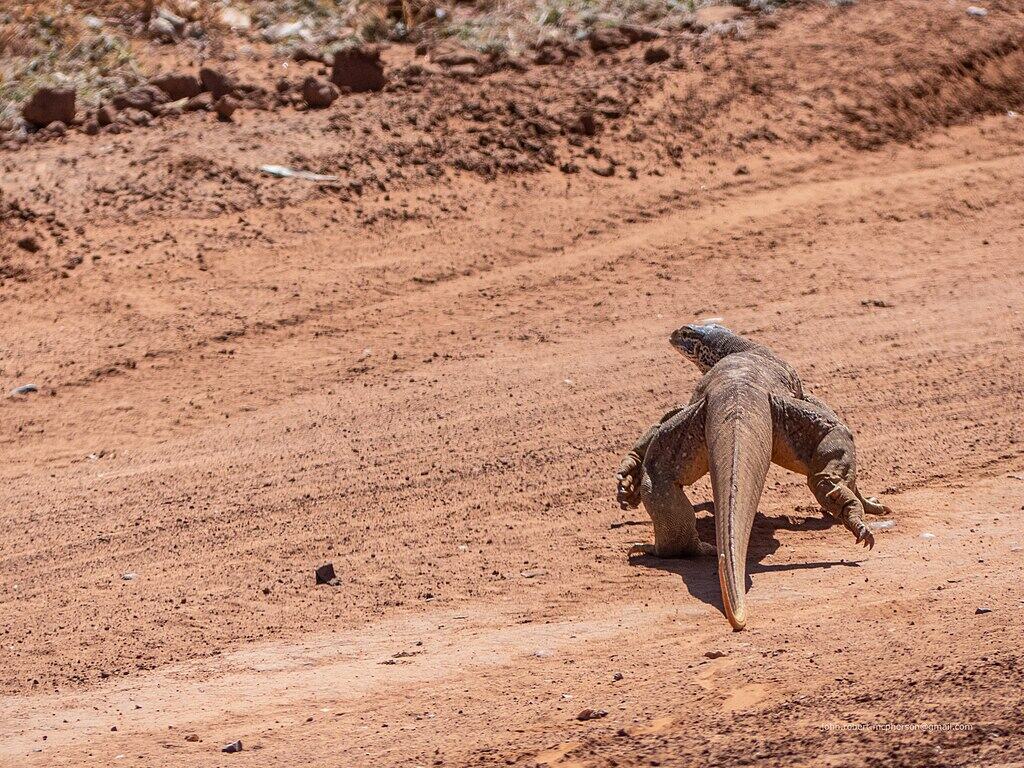
Goannas, large monitor lizards native to Australia, have developed strategic approaches to wildfire survival that showcase both behavioral and physiological adaptations. These reptiles, particularly the larger species like the perentie (Varanus giganteus) and lace monitor (Varanus varius), typically respond to approaching fires by retreating to deep burrows, rock crevices, or hollow logs where they can avoid direct flames and extreme heat. Their thick, scaly skin provides additional protection against brief exposure to high temperatures. What makes goannas particularly noteworthy is their post-fire behavior—they’re often among the first vertebrates to return to burned landscapes, sometimes within hours of a fire’s passage. Research has documented goannas actively hunting along fire fronts, capitalizing on smaller animals fleeing the flames or consuming those that succumbed to the fire. This opportunistic feeding strategy helps explain why goanna populations frequently remain stable or even increase following wildfires. Their resilience in fire-prone environments has made them important subjects in ecological studies examining wildlife responses to Australia’s increasingly frequent and intense bushfires.
7. Short-horned Grasshoppers
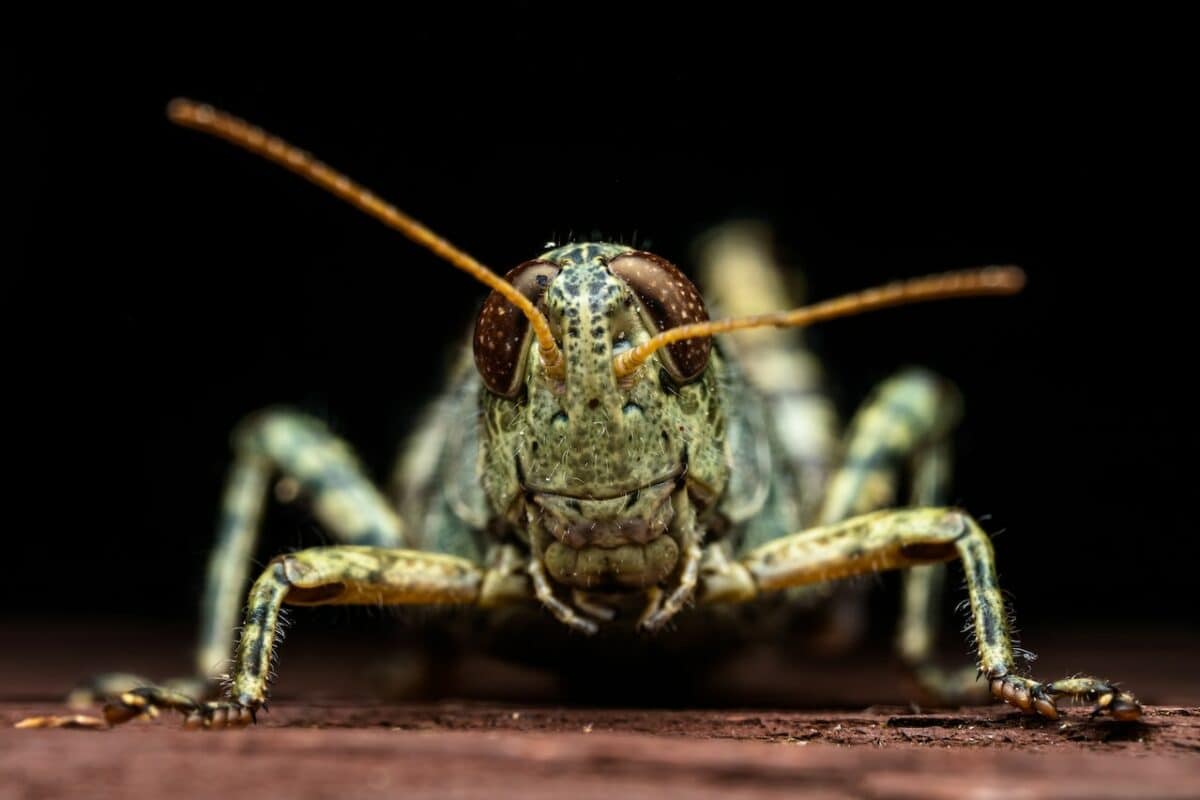
Short-horned grasshoppers (Acrididae family) demonstrate surprising resilience to wildfire through multiple adaptation mechanisms. Unlike many insects that perish in fires, certain grasshopper species have evolved to survive through a combination of behavioral and life-cycle strategies. Many deposit their eggs several inches below the soil surface, where they remain protected from even intense ground fires. Research has shown that soil temperatures just 2-3 inches deep often remain below lethal levels even during severe burns. Additionally, adult grasshoppers demonstrate impressive escape behaviors, using their powerful jumping ability to propel themselves away from approaching flames, sometimes covering distances up to 20 times their body length in a single leap. Perhaps most remarkably, studies in fire-prone grasslands have documented certain species actively colonizing recently burned areas, taking advantage of the post-fire flush of tender vegetation regrowth. This ecological opportunism explains why grasshopper populations often increase in the seasons following wildfires. Their success in fire-adapted ecosystems makes them important indicators for researchers studying invertebrate responses to changing fire regimes in grassland and savanna environments.
6. Bark Beetles

Bark beetles, particularly species in the Dendroctonus and Ips genera, have developed specialized adaptations that not only help them survive forest fires but actually benefit from them in the long term. Unlike fire beetles that are attracted to flames, bark beetles have evolved to exploit fire-weakened trees in the aftermath of burns. Their survival strategy begins with heat-resistant larval galleries bored deep beneath thick bark, creating insulated chambers that can withstand significant external heat. Research has measured survival rates exceeding 80% for Dendroctonus ponderosae larvae in moderately burned pines. In the weeks and months following forest fires, adult beetles detect volatile compounds released by stressed or injured trees using highly sensitive olfactory receptors. These chemical signals guide them to compromised trees that have reduced defensive capabilities. This selective targeting is so efficient that bark beetle populations often surge dramatically in the years following major wildfires. Ecologically, this relationship has significant implications for forest management, as the combination of climate change-driven droughts, increased fire frequency, and subsequent bark beetle outbreaks creates complex challenges for forest ecosystem resilience and recovery patterns.
5. Red-tailed Hawks

Red-tailed Hawks (Buteo jamaicensis) demonstrate remarkable strategic advantages during and after wildfires, though their fire survival isn’t based on physiological resistance to flames. These raptors utilize their exceptional vision—capable of spotting small movements from hundreds of feet in the air—and powerful flight capabilities to stay well above dangerous fire zones. During active wildfires, red-tailed hawks have been observed hunting along fire perimeters, capturing small mammals, reptiles, and other prey as they flee advancing flames. Research tracking raptor behavior during forest fires has documented hawks actively following smoke plumes to locate these hunting opportunities. Their wide-ranging adaptability to different habitats further enhances their post-fire success. Studies in western North America have shown that red-tailed hawk populations often increase in the seasons following major fires as the opened canopy and reduced vegetation create ideal hunting conditions, making previously hidden prey more visible and accessible. This relationship with fire is so pronounced that some researchers consider these hawks “fire-following” species that play important ecological roles in post-fire vertebrate community restoration, helping regulate rodent populations that might otherwise surge in recently burned landscapes.
4. Jack Pine Trees
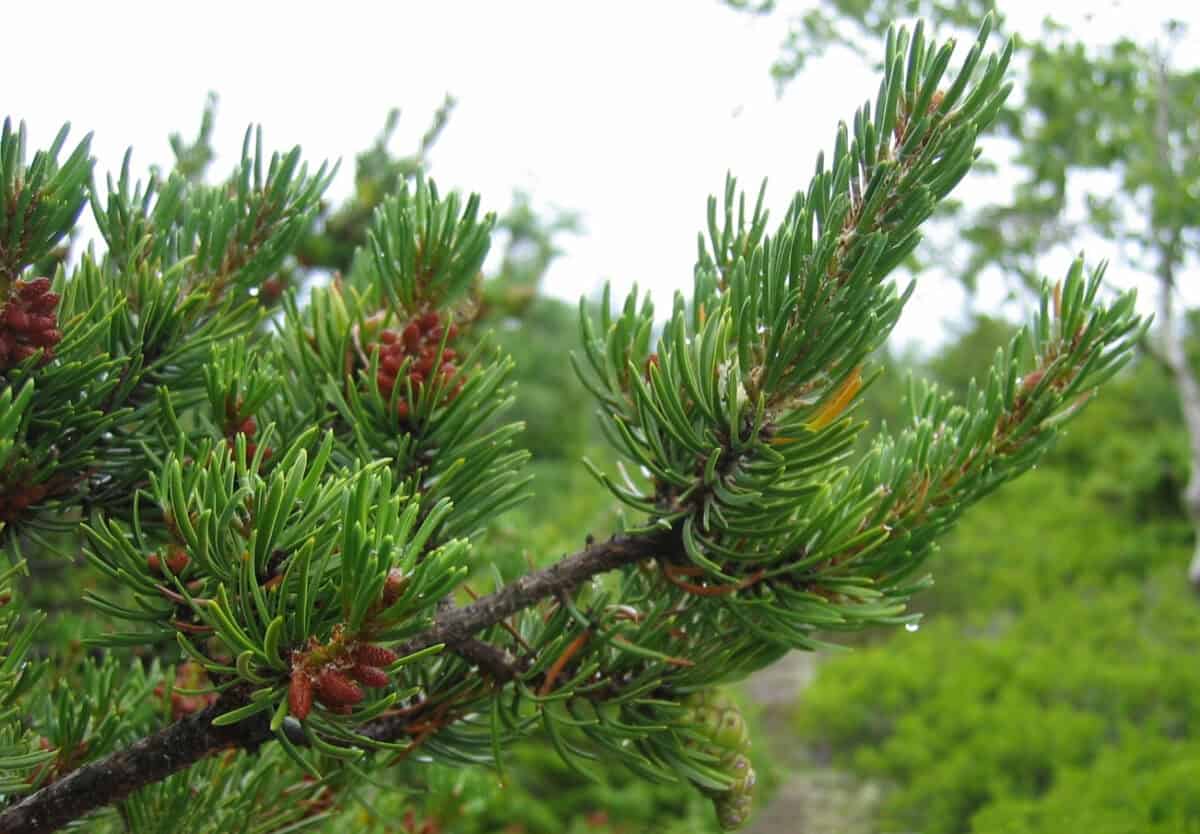
While not animals, Jack Pine trees (Pinus banksiana) represent one of the most remarkable evolutionary adaptations to fire in North American ecosystems and provide crucial habitat for fire-adapted animals. These conifers have developed serotinous cones—specialized structures sealed with resin that requires intense heat to open and release seeds. The cones can remain closed for decades, with viable seeds inside, until temperatures reach approximately 122°F (50°C), typically achieved only during forest fires. This adaptation ensures that jack pine seeds are released precisely when competition is minimized and mineral soil is exposed—ideal conditions for germination. The Kirtland’s warbler (Setophaga kirtlandii), an endangered songbird, depends entirely on young jack pine stands that regenerate after fires, nesting only in trees between 5-20 years old growing in specific post-fire conditions. Similarly, numerous insect species have co-evolved with this fire-dependent ecosystem. The relationship between jack pines and fire demonstrates how entire ecological communities, including multiple animal species, can evolve around fire adaptation, creating complex interdependencies that require periodic burns for sustained biodiversity and ecosystem function.
3. Koalas

Contrary to common misconception, koalas (Phascolarctos cinereus) have limited innate fire resistance and have suffered significantly during Australia’s increasingly severe bushfires. Unlike some Australian fauna, koalas typically don’t possess specialized fire survival adaptations. Their primary strategy involves climbing to the highest branches of eucalyptus trees during fires, instinctively seeking elevation away from ground-level flames. This approach can be effective during moderate burns but becomes dangerously insufficient during crown fires that engulf entire canopies. Koalas’ relatively slow movement—they can only travel about 100 meters on ground per day—severely limits their ability to evacuate fire-threatened areas. Recent research following the catastrophic 2019-2020 Australian bushfires estimated that over 60,000 koalas were killed or affected, highlighting their vulnerability. The dense fur that insulates koalas against cold provides minimal protection against intense heat. Conservation efforts now increasingly focus on identifying and protecting fire refugia—areas where physical features like rock outcroppings, creek lines, or specific topography create naturally fire-resistant zones where koala populations might better survive future fire events.
2. Desert Tortoises
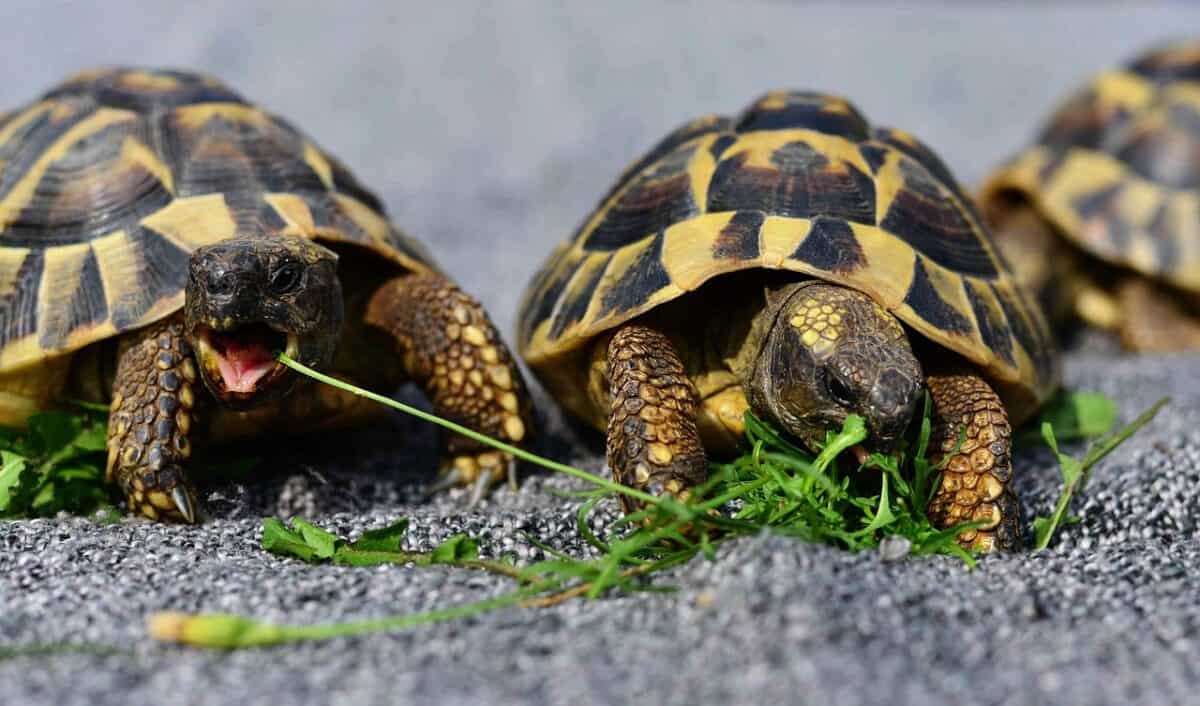
Desert tortoises (Gopherus agassizii) have evolved specialized adaptations that enable them to survive the periodic wildfires that sweep through their arid habitats in the southwestern United States. Their primary fire survival strategy centers on their elaborate burrow systems, which can extend up to 30 feet in length and reach depths of 6 feet or more. These underground retreats provide critical insulation against extreme surface temperatures during fires. Research monitoring tortoise behavior during controlled burns has documented how these reptiles quickly retreat to the deepest portions of their burrows when smoke is detected. Their thick, keratinized shells provide additional protection against brief heat exposure should they be caught away from burrows. Desert tortoises have also developed behavioral adaptations, including an ability to remain inactive for extended periods—sometimes weeks—which allows them to shelter in place until fire danger passes. However, conservation biologists have noted increasing concerns as climate change intensifies fire frequency and severity in desert ecosystems, potentially exceeding the evolutionary adaptations that have historically protected these threatened reptiles. This highlights the vulnerability of even fire-adapted species to rapidly changing fire regimes resulting from human activities.
1. Australian Black Kites
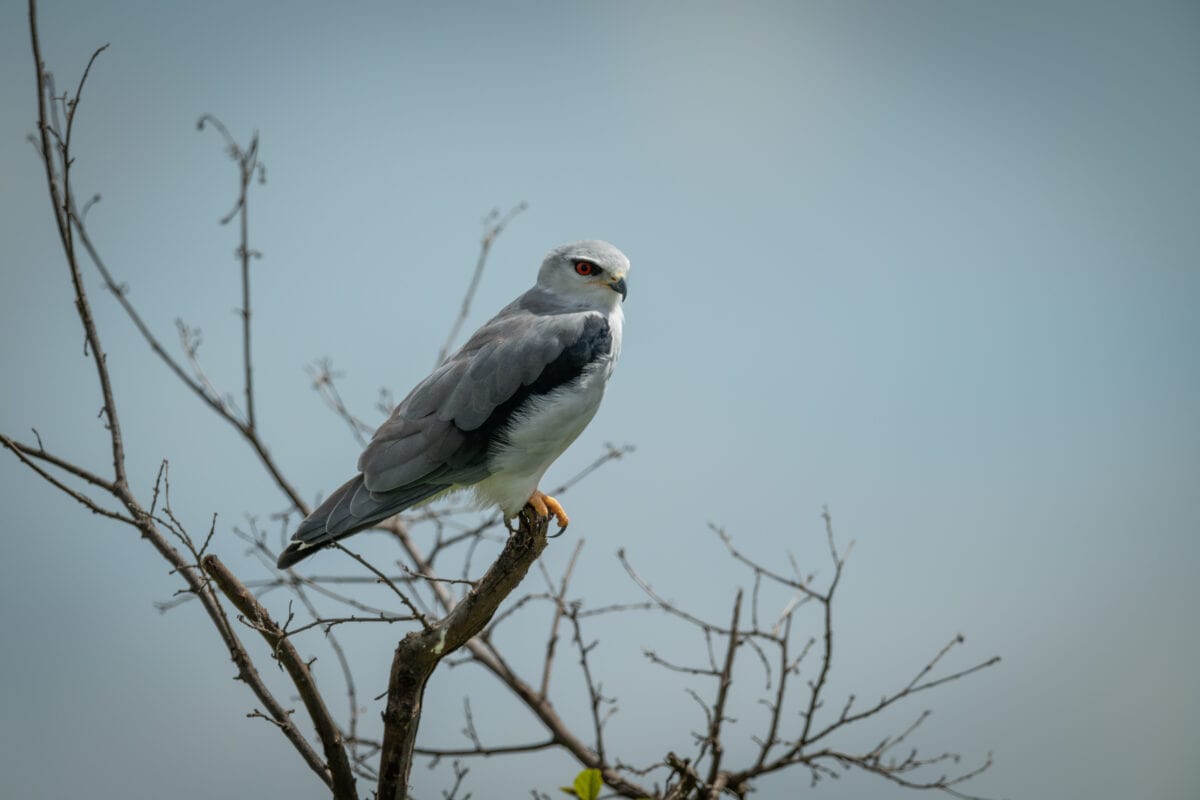
Australian Black Kites (Milvus migrans) exhibit one of the most remarkable fire-related behaviors in the animal kingdom—they have been documented deliberately spreading wildfires to flush out prey. Indigenous knowledge and scientific research have confirmed that these raptors will collect burning sticks from existing wildfires and drop them in unburned areas to start new fires, forcing hidden prey animals to flee into open areas where they can be more easily captured. This sophisticated hunting strategy, sometimes called “firehawking,” represents an unprecedented level of fire manipulation by a non-human species. Beyond this extraordinary behavior, black kites possess excellent vision that allows them to spot fleeing animals from great heights, and their agile flight enables them to navigate through smoke columns while hunting along fire fronts. Studies tracking raptor movements during Australian bushfires have shown that black kites will travel considerable distances to congregate around active fires, sometimes arriving within minutes of a fire starting. Their relationship with fire is so specialized that some ecologists consider them a keystone species in Australia’s fire ecology, potentially influencing fire spread patterns and intensity in ways that are still being researched.
Conclusion: Nature’s Fire Survivors Adapting to a Burning World

The remarkable adaptations displayed by these 13 fire-surviving species illuminate the incredible evolutionary responses to one of nature’s most destructive forces. From the fire beetles that detect infernos from miles away to black kites that deliberately spread flames, these creatures demonstrate that life finds ways to persist and even thrive amid seeming devastation. As climate change intensifies wildfire frequency and severity worldwide, understanding these adaptations becomes increasingly crucial for conservation efforts and ecosystem management. These fire-adapted species serve as living laboratories, offering potential insights into resilience strategies that might inform human approaches to coexisting with wildfire. Their stories remind us that in nature’s long history, fire has been not just a destroyer but also an ecological sculptor, shaping remarkable survival strategies through countless generations of environmental pressure.
- 15 Emotional Service Dog Stories That Prove Dogs Are More Than Just Pets - August 20, 2025
- How the Global Pet Trade Is Threatening Exotic Animals in the Wild - August 20, 2025
- Crocodiles Are Closer to Dinosaurs Than Birds - August 20, 2025

